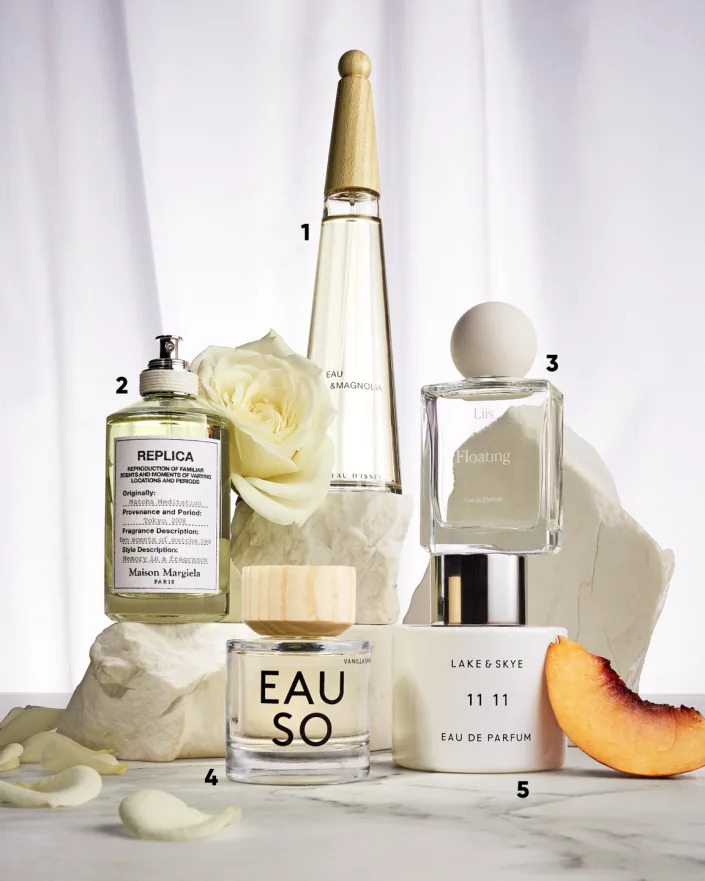When Clinique launched the fragrance in 1997 Happy , people in the beauty industry turned their noses up at perfumes designed to lift the mood. This was an era when fragrance campaigns aimed to be edgy and cool or seductively exciting, so the perception of joy was initially seen as something of a slog, and insiders doubted the fragrance would catch on.
Of course, Happy proved all the naysayers wrong, becoming a huge success that remains a cult to this day. Its enduring legacy may be due to the fact that it was the first perfume created using “mood mapping,” a technique originally developed by flavor and fragrance manufacturer International Flavors & Fragrances that identifies how different scents affect our emotions. Clinique’s iconic citrus-floral blend doesn’t just smell bright, it’s designed to make you feel invigorated every time you take a whiff. What began as a new approach to fragrance creation 25 years ago is now an integral focus of the perfume industry. Many of the newest perfumes contain notes that not only help lift your spirits, but also soothe your soul, soothe you,
“During the pandemic lockdown, fragrances have become a primary source of comfort and stimulation for many of us, from comforting food smells to taking our minds off the beaten track with scented candles and home fragrances,” says Dana Schmitt, perfumer at Givaudan, one of the leading perfume manufacturers. and flavorings worldwide. “It deepened our appreciation for smell as a mood catalyst. Now that we’re out and about again, we still use personal fragrance to achieve that effect.”
Science
If the concept of fog on a good atmosphere sounds a bit far-fetched, science suggests otherwise. Evidence shows that smell triggers 75 percent of our daily emotions, which may explain why the perfume we wore primarily to smell good to others is increasingly becoming part of our self-care routine. (Though it could be argued that the spritz that cheers you up is also a tool of attraction, since we’re more attracted to positive, upbeat people.)
A recent survey by research firm The NPD Group found that three out of four perfume consumers say fragrances help lift and improve their mood, so perfume companies are incorporating aromatology—the study of how scents affect our behavior and feelings—in the development of new fragrances. aromas fragrances using far more advanced tools and resources than were available when Clinique Happy was created in the 90s. Givaudan and Firmenich, another world leader in fragrances and fragrances, have their own groups of neuroscientists who study the specific emotions evoked by certain smells. They also possess technology that allows them to identify and reproduce complex, highly specific scent combinations that help enhance positive feelings and reduce negative moods in people. These technologies have the ability to identify and capture molecules in the air in various stress-reducing environments, such as a forest or a beach. Perfumers can then recreate the molecular composition of these natural atmospheres and bottle them for your enjoyment.
Unlike aromatherapy (which targets physical health with the scents of plain oils and crude extracts), functional fragrances, as they’re often called, are sophisticated synthetic perfumes that stimulate an emotional response—a kind of compound with benefits, if you will. To be clear, they’re not medicine, but “these fragrances combine familiar notes that evoke a sense of pleasure and well-being when you wear them,” explains Firmenich perfumer Alexandra Monet.
These emotional reactions occur because of what scientists call the “olfactory connection,” which refers to the unique way our brains are tuned to smells. This is why, of all the five senses, smell has the strongest connection to memory and emotion. While our other senses process information indirectly, sending it through various touch points before it is interpreted by the brain, messages from smells go directly to the areas of the brain that regulate emotions, creativity and memory. “That’s why when you smell a smell, you often have an immediate, intuitive response and can instantly recall an associated feeling or memory,” says Schmitt.
All of this high-tech analysis and neuroscience boils down to one simple goal: to develop pleasant fragrances that make us feel a little happy, relaxed, grounded, or invigorated.
For a sense of calm and balance, try a rich, earthy forest
“Based on years of research examining how scents trigger areas of the brain associated with certain emotions, we found that woody scents and creamy musks promote feelings of calm and relaxation, especially in women,” says Monet. “Earthly fragrances that contain notes of roots, seeds, and woods tend to make people feel connected to the earth, which in turn helps them feel centered and grounded.” Let these blends work for you.
For a happier feeling and less anxiety, try Airy, Water Florals
“In our research, we found that scents that evoke an open horizon and fresh, clean air, such as dewy greens and watery notes along with bright floral notes, help people feel energized and less stressed,” says Monet. Inhaling the scents associated with the quiet, peaceful environment where you fly evokes the same emotions we feel when we are physically in those places. Look for perfumes with the essences of lush green gardens, soft fruits and flowers, and misty green landscapes to lift your spirits and ease your worries, here are a few to try.


